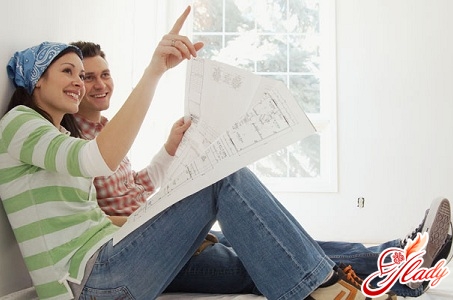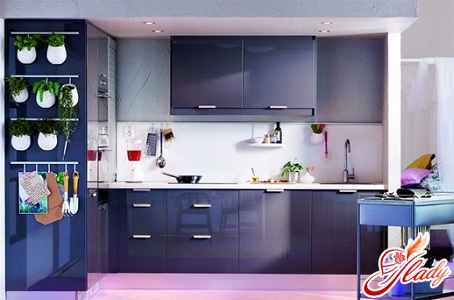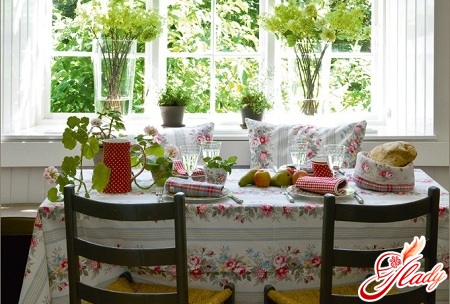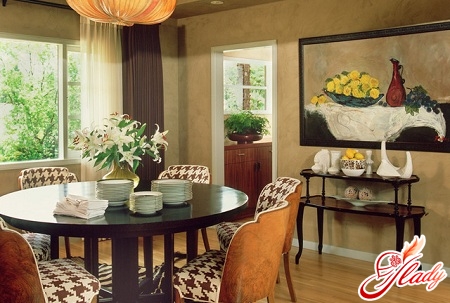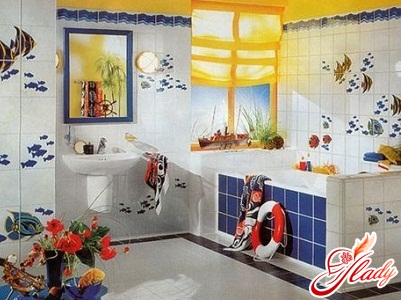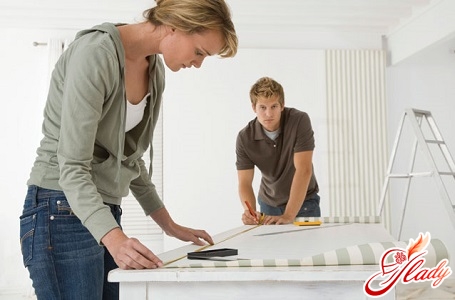 Although vinyl wallpaper is far from new,Their popularity has not decreased since the first appearance of the product on the market in the middle of the last century. They have won over the consumer with their advantages: they can be wet cleaned without fear of spoiling their appearance. Modern types of wallpaper are even more advanced: they have different textures and are breathable. The ability to repaint wallpaper several times allows you to refresh the design and make changes to the decor in a cost-effective way. After reading the information in our article, you will learn how to glue vinyl wallpaper. This type of wallpaper is special, two-layer. The upper part consists of polyvinyl chloride, or vinyl, the lower layer is made of either paper or non-woven fabric. Due to their two-layer nature, they weigh more than ordinary types of wallpaper. To prevent them from peeling off the surface under their own weight, you must use a special type of glue created specifically for this type of wallpaper. So how to glue vinyl wallpaper? In order to glue vinyl wallpaper, you will need some more inventory. A fur roller or a special brush will help you prime the walls and apply glue to the canvas. When working with seams, you will use a rubber roller. You will monitor the evenness of the surface and the accuracy of the gluing lines with a level or plumb line. In addition to these basic tools, be sure to prepare a tape measure, paper tape, scissors or a knife for cutting wallpaper. A cotton rag will help remove glue drips. Have you prepared everything? Now you can start gluing! Those who already know how to glue vinyl wallpaper know that they are capricious when drying. They are prohibited from stretching during the gluing process, because they tend to shrink. This threatens that wide gaps will appear between the wallpaper after drying, completely spoiling the entire appearance of the room. That is why many wisely decide to entrust this work to experienced specialists, and they themselves only supervise the process. Whatever decision you make: to glue the wallpaper yourself or with the help of skilled hands of professionals, it will not be superfluous to know all the intricacies of the upcoming work process.
Although vinyl wallpaper is far from new,Their popularity has not decreased since the first appearance of the product on the market in the middle of the last century. They have won over the consumer with their advantages: they can be wet cleaned without fear of spoiling their appearance. Modern types of wallpaper are even more advanced: they have different textures and are breathable. The ability to repaint wallpaper several times allows you to refresh the design and make changes to the decor in a cost-effective way. After reading the information in our article, you will learn how to glue vinyl wallpaper. This type of wallpaper is special, two-layer. The upper part consists of polyvinyl chloride, or vinyl, the lower layer is made of either paper or non-woven fabric. Due to their two-layer nature, they weigh more than ordinary types of wallpaper. To prevent them from peeling off the surface under their own weight, you must use a special type of glue created specifically for this type of wallpaper. So how to glue vinyl wallpaper? In order to glue vinyl wallpaper, you will need some more inventory. A fur roller or a special brush will help you prime the walls and apply glue to the canvas. When working with seams, you will use a rubber roller. You will monitor the evenness of the surface and the accuracy of the gluing lines with a level or plumb line. In addition to these basic tools, be sure to prepare a tape measure, paper tape, scissors or a knife for cutting wallpaper. A cotton rag will help remove glue drips. Have you prepared everything? Now you can start gluing! Those who already know how to glue vinyl wallpaper know that they are capricious when drying. They are prohibited from stretching during the gluing process, because they tend to shrink. This threatens that wide gaps will appear between the wallpaper after drying, completely spoiling the entire appearance of the room. That is why many wisely decide to entrust this work to experienced specialists, and they themselves only supervise the process. Whatever decision you make: to glue the wallpaper yourself or with the help of skilled hands of professionals, it will not be superfluous to know all the intricacies of the upcoming work process.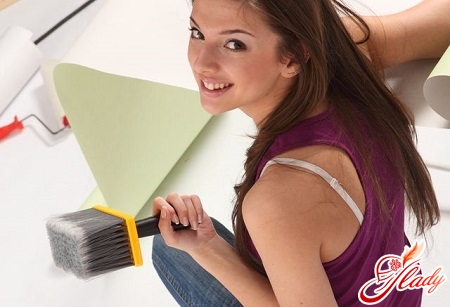
Preparation of walls and their surfaces
When carrying out repairs in a residential area, completelyRemove any remaining old wall coverings. In new buildings, you don't have to tear anything off, but the walls need to be leveled. You need to get rid of all the differences in level, potholes, and chips. Before you glue the first of all the necessary strips of wallpaper, make sure that the surface is completely dry; this is especially important if plastering work was done beforehand. It is also recommended to treat all surfaces with antifungal compounds. The walls are primed with wallpaper glue diluted according to the instructions, or with a deep penetration primer. Using a level, mark off a vertical reference line for gluing the first sheet of wallpaper. Just in case, we remind you that the work should be carried out in a room with the electricity turned off, removing sockets and switches from the walls. There should be no drafts in the room where you intend to glue vinyl wallpaper, and the use of fans and air conditioners is not allowed. The windows should be closed until the pasted sheets are completely dry. Observe the temperature regime – the room should not be below +23…+25̊ C.
Preparing wallpapers
The wallpaper is cut into wide strips with an allowancelength of about ten centimeters. Wallpaper with a pattern often requires matching elements of the image, remember this nuance. The glue is diluted at least ten minutes before the upcoming gluing process, this is necessary for its better swelling. Vinyl wallpaper should be glued end to end, without overlapping the sheets on each other. Glue is applied to the size of the wallpaper strip, then it is glued and the next cut is prepared. In the process, make sure that particles of glue cannot get on the outside of the wallpaper. This is especially important if the canvas is light in color. It is more convenient to glue vinyl wallpaper not in proud solitude, but in the company of someone. One of you will cut wide strips and cover them with glue. The other can apply glue to the wall, and then, having climbed up on a dais, align the edges of the sheets with a given vertical line. They should be pressed against the base of the walls, and then, using a roller, push out the air bubbles trapped under the wallpaper, moving from the center to the periphery and from top to bottom. If drops of glue appear along the edges of the canvas, they should be immediately removed with a rag.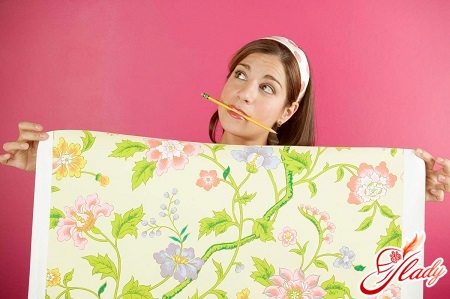
Remove unnecessary
After the canvases are pasted, you need tostart cutting off the allowances that are at the bottom near the baseboard and at the top under the ceiling. To do this, it is better to wait until the wallpaper is thoroughly dry. The cut should be made with a knife with a sharp blade so that the wallpaper cannot tear when pressing the tool. Ideally, the baseboard is removed completely. If for some reason this is not possible, then the cut is made exactly along the edge of the baseboard. Use a metal ruler, press the wallpaper and start cutting it with a very sharp blade of a stationery knife. When working with wallpaper, you need to carefully ensure that the glue does not get anywhere except in the area intended for this. To prevent glue from leaking onto the painted ceiling, fold a piece of wallpaper about five centimeters from the top, then it will not reach the ceiling line. When the canvas has completely set, the remaining strip at the top is glued using a thin brush. This way you have a better chance of protecting the ceiling from drops of glue. Another difficulty in the process of pasting is the corners of the room. You can do this by gluing vinyl wallpaper in the corners with an overlap. This option is suitable for single-color types of wallpaper or for wallpaper with a not very large pattern. In this case, the strip is overlapped onto the adjoining wall by about one centimeter, this area is covered by the next sheet. Do not forget to maintain a strictly vertical position of the wallpaper. Overlapping pasting is carried out using special glue, which can be easily found on sale. The disadvantage of this option is that the end result is not very aesthetic. The second option is more labor-intensive, but the result will be much better. You should start the pasting process in the same way as in the first method, except that the allowances should be left wider. They should be at least two to three centimeters. When you are sure that the pasted sheets are completely dry, you can begin to cut two sheets at once vertically. To make this task easier (after all, you need to make sure the cut is even), use a metal ruler or a spatula with a blade thirty centimeters wide. After you have removed the cut strips, bend the edges of the wallpaper to apply glue to them. Then go over this area with a roller or a plastic spatula. That's it - you managed to make a perfect seam!
We glue wallpaper in the places of installation of switches and sockets
We glue the wallpaper on the wall using the usual procedure,observing all the rules, we wait for the canvas to dry, and then we cut holes in them for switches and sockets. We will not fail to repeat that before starting work, it is necessary to take safety measures and turn off the electricity. All electrical installation products are pre-unscrewed. When the wallpaper dries, the holes will be made, you can put them back in place.




